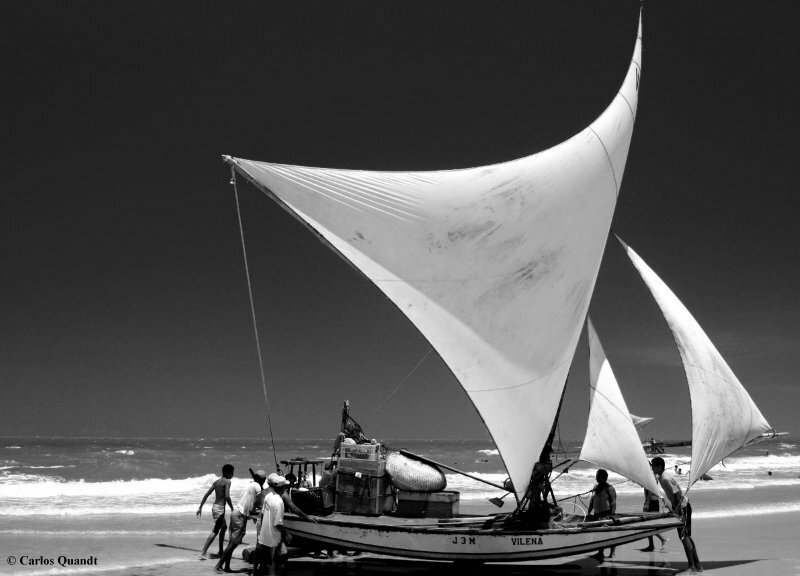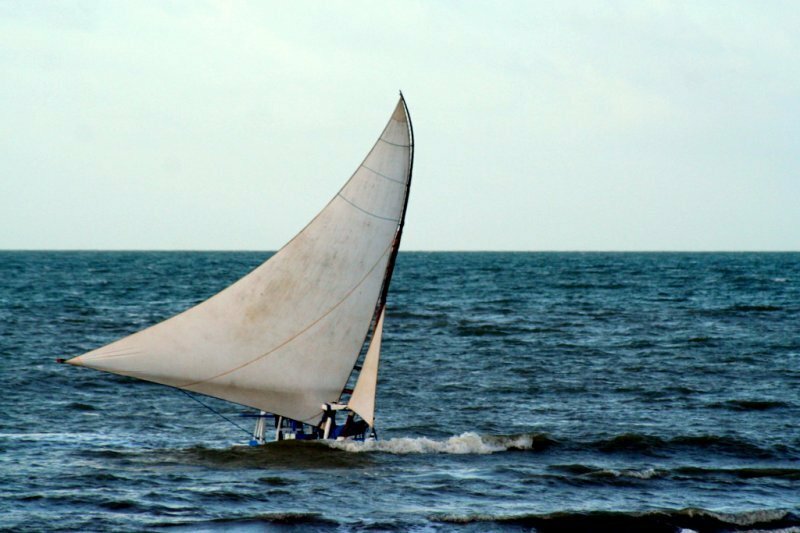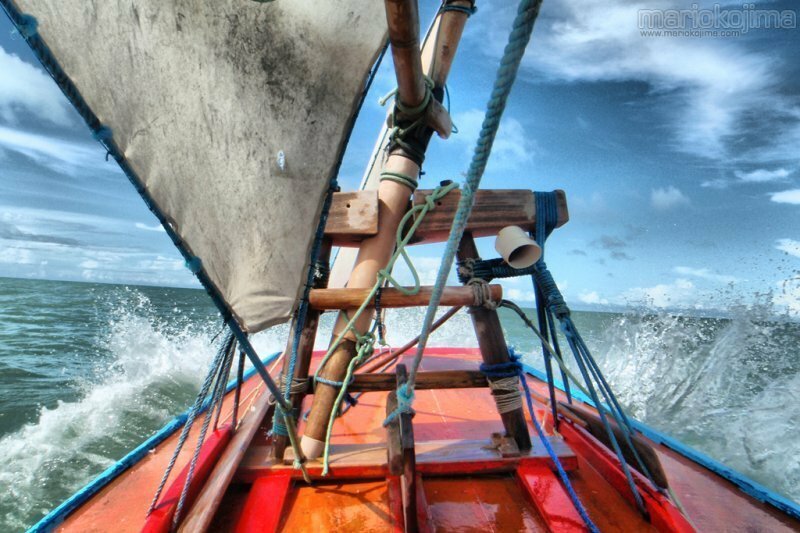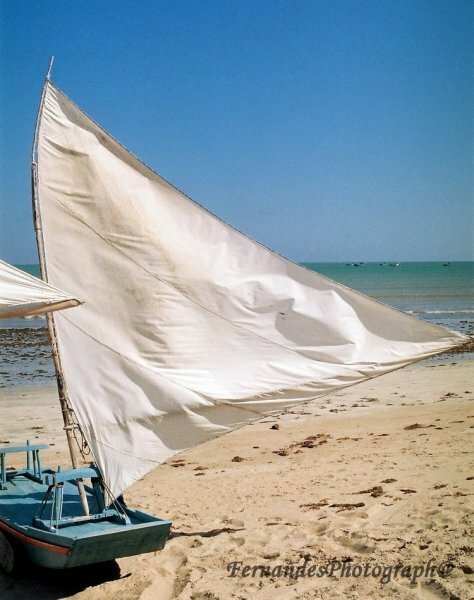Construction
The rigging and sails of a jangada are sophisticated whilst the streamlining of the hull is stripped to its bare essentials. The most remarkable part of the jangada is its graceful mainsail, which is often almost as wide as it is high.
The sail allows the jangada to sail close to the wind, sometimes 45 degrees to the wind, which matches the ,close hauled´ abilities of modern yachts. Some of the larger jangadas have a small jib, to compensate the tendency of a boat with just a mainsail to turn into the direction of the wind (to ,luff`) and subsequently lose speed or stop altogether
Traditional jangadas are made out of at least six logs, preferably from a local tree (Apeiba Tibuou). Balsa wood, which is even lighter than cork, has also been used. These ,piuba` jangada´s are rare today, if not extinct. The logs from this traditional type of jangada are normally used for only a year as they slowly absorb water, making the raft gradually sink. To the end the jangadeiros on piuba jangada´s stand with their feet in the water and then it obviously becomes time to replace the raft.
The longer the jangada is the more stability it needs. Some of the boats therefore have seven or eight logs. Because the price of the piuba increased dramatically in the 1950 the jangadeiros changed tactics during that decade. They decided to build a normal hull, a jangada of planks. These so called jangada of tabua is caulked as a normal western traditional ship and more expensive than the traditional piuba, but it has a longer life span.
The boat is often built without the use of modern materials like nails and most binding materials used are natural fibres. The logs are tied together with dowels, and wooden kegs and wooden arrows are holding them in place. There is a place for one and sometimes two members of the crew to sleep.
The mast of a jangada can be put into several different positions, depending on the direction of the wind. The lower end of the mast runs on deck level through a construction that allows the sailor to change the position of the mast foot, which can be put into small holes. In traditional boats there are three, and sometimes more of these holes. This is a unique and sophisticated system that is found nowhere else in traditional sailing boats in the world.
The result, is that even with a beam wind the boat sails with a maximum of sail area and a minimum of heel since the mast can be turned into such a position that it leans towards the wind. The sail cannot be reefed. To avoid leeway on close hauled courses the boat has a centreboard, not unlike the centreboards in modern dingies.

Jangada, Ceara State, 2006 © Chris Masson




